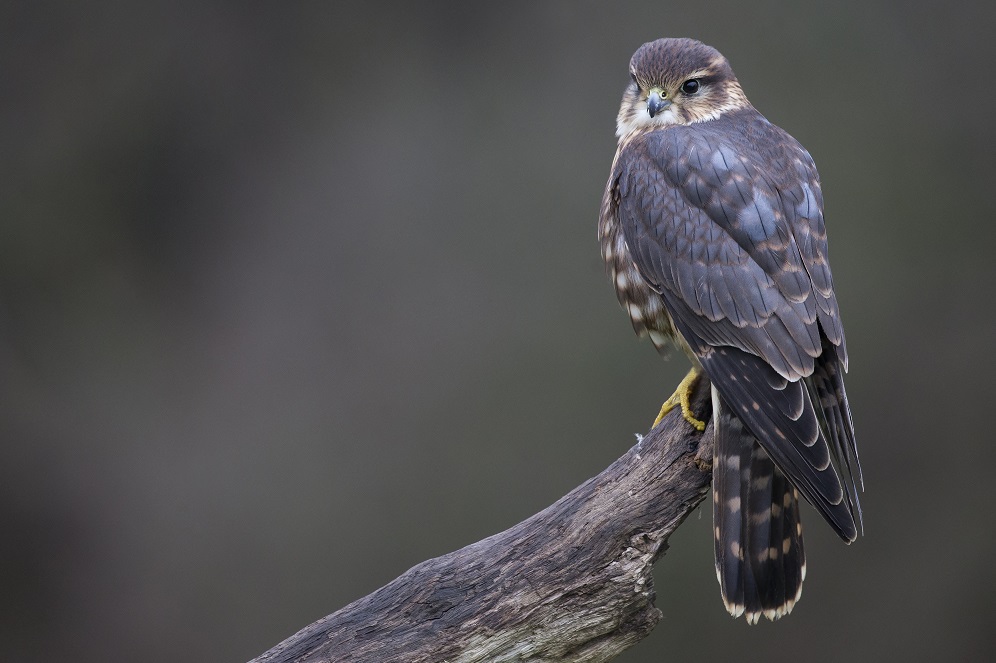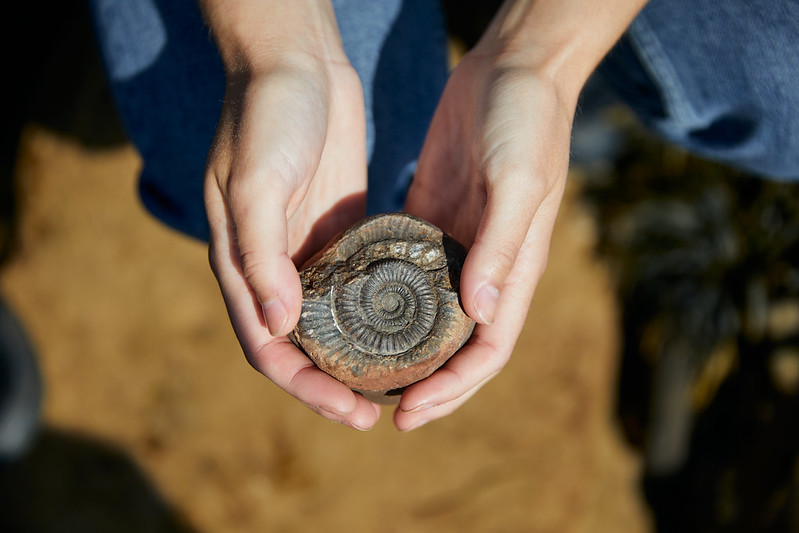Take in the scent of summer. Our moorland will soon be a magnificent purple blaze as the heather flowers, alive with the buzz of honeybees, damselflies, moths and butterflies.
From mid to late August and into September, the moorland is an unsurpassed attraction when all the tiny flowers of heather burst into bloom and the landscape in transformed into a seemingly endless carpet of pink and purple. Three types, ling and cross leaved heath, together with deep dark pink/purple bell heather, provide the most continuous and extensive display compared to anywhere else in England.
Our tip
Take a closer look at Fylingdales Moor, the vast heather moorland inland of Robin Hood’s Bay and Ravenscar. Notice anything special? Unlike most other moorland in the National Park, grouse-shooting isn’t permitted here and instead it’s managed as a conservation area.
That means it’s home to over 90 bird species (including birds of prey like the merlin, Britain’s smallest falcon), plus otters, water voles, orchids, butterflies, moths and adders – forming a wonderful web of moorland wildlife. And of course it’s a great place to have a wander amongst the heather at this time of year. It’s open access land, which means that walkers don’t have to stick to footpaths or other public rights of way (unless they are accompanied by a dog). Follow the Jugger Howe nature trail (pdf) and you may be lucky to catch a fleeting glimpse of a merlin.

Also look out for:
- Bilberries fruiting on the moorland. Globe-shaped, pink flowers appear among the green shoots of this low shrub from July to September. The flowers mature into small, globular black berries that have a bluish, waxy ‘bloom’, like grapes. Go bilberry picking for cooking in bilberry tarts - delicious with cream!
- Day-flying moths as well as butterflies abound this month, making the most of summer’s nectar rich flowers; beautiful yellow-underwing moths feed on the moorland heather. Why not set a moth trap overnight, and see the plethora of moths that are drawn to the lights? Returning to the trap in the morning to discover what’s inside is always fascinating.
- Porpoise, dolphins and seals. If it’s a still day when you’re out at the coast and the tidal surge on the North Sea isn't strong, it’s worth keeping an eye on the water, especially from sea-top cliffs. With few cresting waves, it’s easier to spot the tell-tale fins of harbour porpoise and dolphins swimming offshore. If you’re lucky you may also see the bobbing head of a seal or two. You may also spot the Great Skua and Arctic Skua offshore as they migrate along the eastern coast back to Africa for winter. Binoculars are useful here!
- It’s a great time to go rockpooling while the weather’s still warm. Who will find the largest crab?! See how many species you can find too. Edible, shore, porcelain, velvet-swimming and hermit crabs are all out there on our Yorkshire Coast. Barnacles, limpets, cockles, sea anemones, blennies, butterfish, sea squirts and sea hares are just a few of the other creatures you might find. Saltburn, between Staithes and Port Mulgrave, Whitby, Runswick Bay, Robin Hood’s Bay and Boggle Hole are all great places. Purchase a copy of Field Studies Guide (Coastal Wildlife) available from local outlets to help.
- Go on a spot of fossil hunting too. The coast around Whitby and Staithes is also renowned for its rich seams of fossils encased in the rocky cliffs and in pebbles on the shore.
Responsible fossil hunting
Fossil hunting is great fun but please do follow our guidelines to prevent any unnecessary damage to our natural heritage.
- Look for fossils in loose beach material
- Only collect a small number
- Keep detailed records (what, where, when)
- Keep hammering to a minimum
- Avoid disturbance to wildlife
- We always recommend that you check local tide times. You can buy a copy of the tide timetable at various shops up and down the coast. Find it in The Baytown Chronicle magazine or check the tide times online. Set out at least an hour before low tide to give yourself enough time to walk out and explore before heading back.
Stay well away from the base of steep cliffs and wear appropriate footwear and clothing. Check The Yorkshire Fossil-Finder’s Guide for helpful tips.

Walk of the month
Take advantage of the long summer days to enjoy the National Park in a nutshell on a longer 11 mile walk from Ravenscar to Robin Hood's Bay. From the craggy heights of Ravenscar, the route runs across Howdale Moor for some classic moorland scenery before dropping down to the old Scarborough-to-Whitby railway line and along to the famous smugglers' haunt of Robin Hood's Bay. Both here and at nearby Boggle Hole you can indulge in a spot of rockpooling, before returning along the clifftop for exhilarating sea views along the Cleveland Way National Trail.
